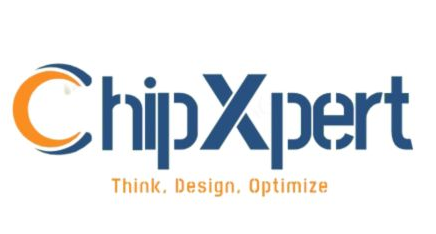Accelerate Your VLSI Career and Gain Expertise with
Physical Design Certification Course (Online)
- Synopsys Tools
- 100% Placement Assistance
- Upto 40% Discount
15th January 2025
6 Months
Offline Classes
The VLSI Physical Design Course is crafted specifically for fresh graduates, offering comprehensive training to kickstart a career as a Physical Design Engineer in the VLSI industry. The program is aligned with the latest industry standards and is conducted by seasoned trainers with expertise in Physical Design.
The course begins by building a strong foundation with an introduction to Linux, CMOS fundamentals, Digital Electronics, and Digital Design using Verilog. From there, participants progress to advanced topics, including Synthesis, Logical Equivalence Check (LEC), and the complete Physical Design flow. This includes essential processes such as Floorplanning, Power Planning, Placement, Clock Tree Synthesis (CTS), Routing, and Static Timing Analysis (STA), along with Physical Verification to ensure design integrity.
To bridge the gap between theory and real-world applications, the course includes two hands-on projects using 14nm and 28nm libraries, giving students practical experience in state-of-the-art semiconductor technology. The training is further enriched with lab sessions on industry-standard tools from Synopsys, such as ICC2, Formality, starRC, PrimeTime, and IC Validator, ensuring participants are well-prepared for industry demands.
Whether you’re a recent graduate or an aspiring engineer, this course offers the perfect combination of foundational knowledge, practical skills, and industry exposure to help you excel in the competitive VLSI field.

Course Fee
Scripting exercises from simple problems to complex problems, in an incremental manner and using tools like Prime Time, ICC2.
Introduction to physical designand Physical Design Flow, Data preparation : Files required for PD ( Netlist, SDC, Libraries, Technology files, TLU+), the contents of each input file, Sanity checks.
Goals of Floor planning, different aspects of floor planning, Rectangle/Rectilinear floorplans, Die size estimation (Core Utilization, Aspect ratio), IO placement, macro placement and guidelines, channel-width estimation.
Goals of Power Routing, Power distribution structure (Rings, straps and follow-pin/std cell rail), metal stack information, power planning methodology, IR drop analysis, types of power consumption. Why Low power and low power techniques. Electro-migration analysis.
Goals of Placement, types of placements, pre-place (End-cap, Tap & I/O Buffer) cells, placement optimization, congestion analysis, timing analysis, Tie-cells, High-Fanout Net Synthesis, Scan chain re-order, Path Grouping and creating Bounds.
STA Overview and concepts, Basic timing checks (setup, hold), understanding timing constraints(SDC), timing corners, timing report analysis.
General optimization techniques, typical causes for timing violations and strategies for fixing the same, Pre-CTS optimization to Fix setup violations.
Goals of CTS, Types of Clock-tree, constraints for CTS, building clock tree, Analyze the results,
Post-CTS optimization: Fixing Setup and Hold violations.
Goals of Routing, Stages of Routing: Global Routing, Track assignment and Detail Routing, Routing options, Fixing of routing violations (DRC, LVS), post route optimization, issues in routing and guidelines for optimum routing results.
Post layout STA using SPEF, Multi Mode Multi Corner STA, Derating factors, PVT, OCV Variations, Crosstalk Analysis.
What is ECO, Types of ECO, Timing & Functional ECO, Performing the ECO placement and routing.
Physical Verification (DRC, LVS), IR drop analysis, Electro-Migration Analysis.
Projects will be given converging Netlist to GDS II flow. Various projects that will allow the students to understand the intricacies of implementation for the minimum area, low power, high performance. The method of execution will be similar to typical block level Physical Design work/project in the industry. Block level input database will be given and the participant has to deliver GDS II, after cleaning all the issues during sign-off checks.
Take online test for 90 mins with 60 MCQs. Syllabus includes Aptitude, Digital Electronics, Electronic Devices.
Enroll in the course, if selected. Start your preparation by getting access to the pre-requisite materials.







We provide placement assistance by arranging interview opportunities with hiring companies. This is complimentary service from ChipXpert, without charging any extra amount for this. We charge only for our training, but not for placements.
We provide placement support until candidate gets job. To Ensure Successful Placements, We provide added support including mentorship, fundamentals classes, soft skills training, mock interviews Etc.
Salary Range For Freshers Is From 3- 4 Lakhs Per Annum In Service Companies. Salaries In Product/MNC Companies Can Range Between 7 To 16 Lakhs.
Though 3-4 LPA appears similar to software salaries, your real growth comes after 3 years. First 2-3 years are to be considered as career building phase, to learn as much as you can and do not compare with others / IT salaries. Your knowledge will be your power and your career / salary growth from 4th year onwards depends on your talent/knowledge.
Each year many companies visit ChipXpert for recruiting the various entry level positions because of the quality training that we offer.
For complete list of companies visit https://chipxpert.com/view-hiring-companies/
We use 28nm,14nm libraries for labs, projects.
We use the latest and genuine versions of Synopsys Tools for our courses. please check course pages, for the list of tools used for that respective course. We provide a dedicated tool license for every learner during the lab/project work.
This is the biggest advantage with ChipEdge courses, as quality and standard EDA/VLSI tools are important for any VLSI course. And these tools are typically very costly ranging from $50,000 to $200,000 per license per year. Many service companies cannot afford these tools. Thanks to the EDA/Tool companies for giving these tools at subsidized & affordable rates to training companies, so that engineers can get trained on these tools.
We do have installment options for some courses. EMI option is available through our partner organizations, who provide loans for training programs. Please check with our learning advisors.



